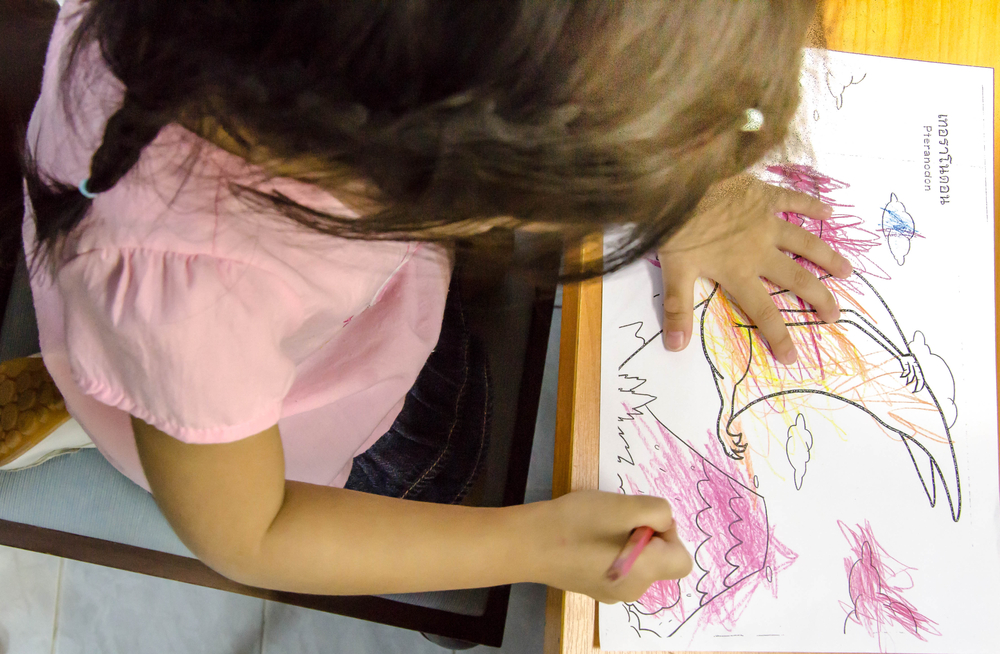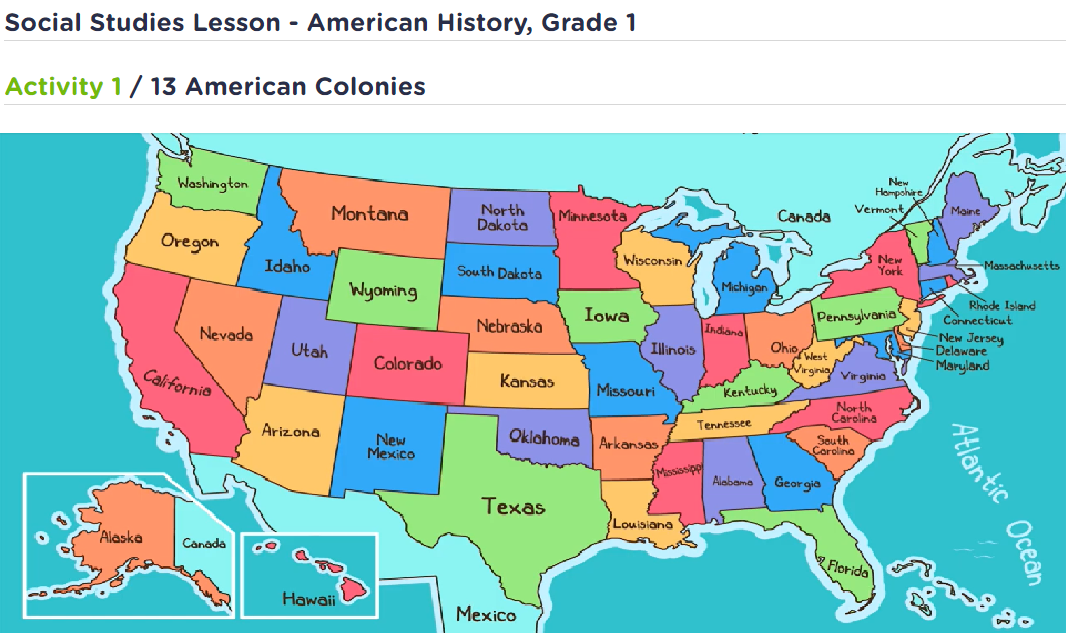Spatial awareness Normal Math Worksheets for Ages 4-5
7 filtered results
-
From - To
Enhance your child's spatial awareness with our engaging Normal Math Worksheets designed specifically for ages 4-5! These worksheets are perfect for young learners, helping them understand concepts like shapes, positions, and spatial relationships through fun activities. Each worksheet features colorful illustrations and age-appropriate challenges that promote critical thinking and fine motor skills. Our carefully crafted exercises encourage kids to explore spatial reasoning in an enjoyable way, ensuring a strong foundation in early math skills. Explore our collection now and support your child's learning journey with interactive and captivating resources that set the stage for future success in mathematics!
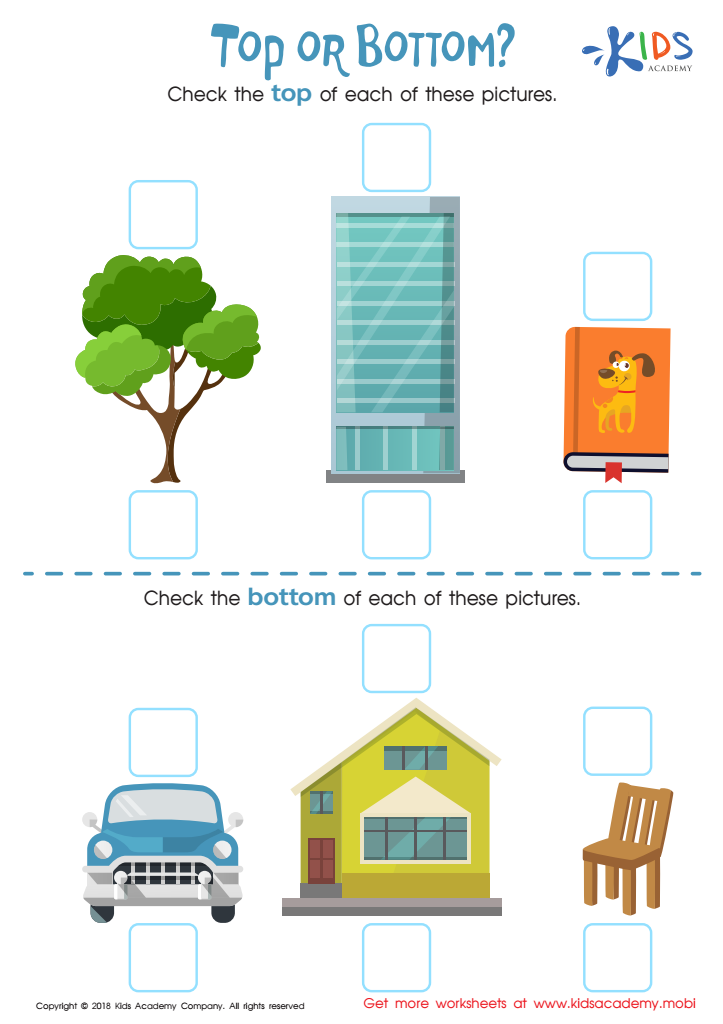

Top or Bottom Worksheet
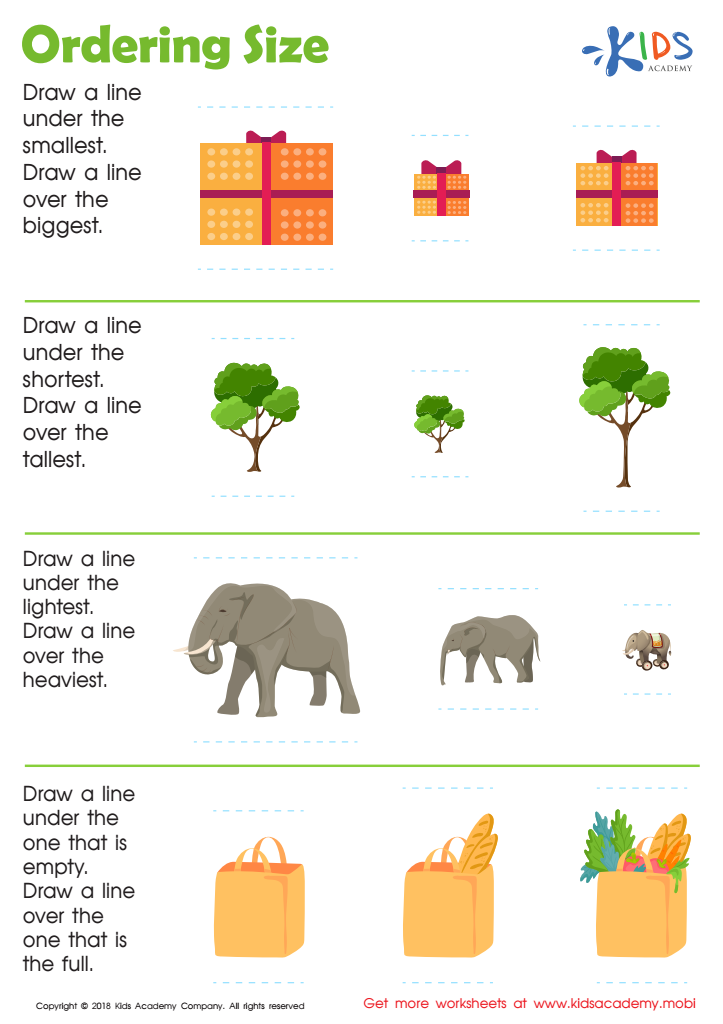

Ordering Size Worksheet
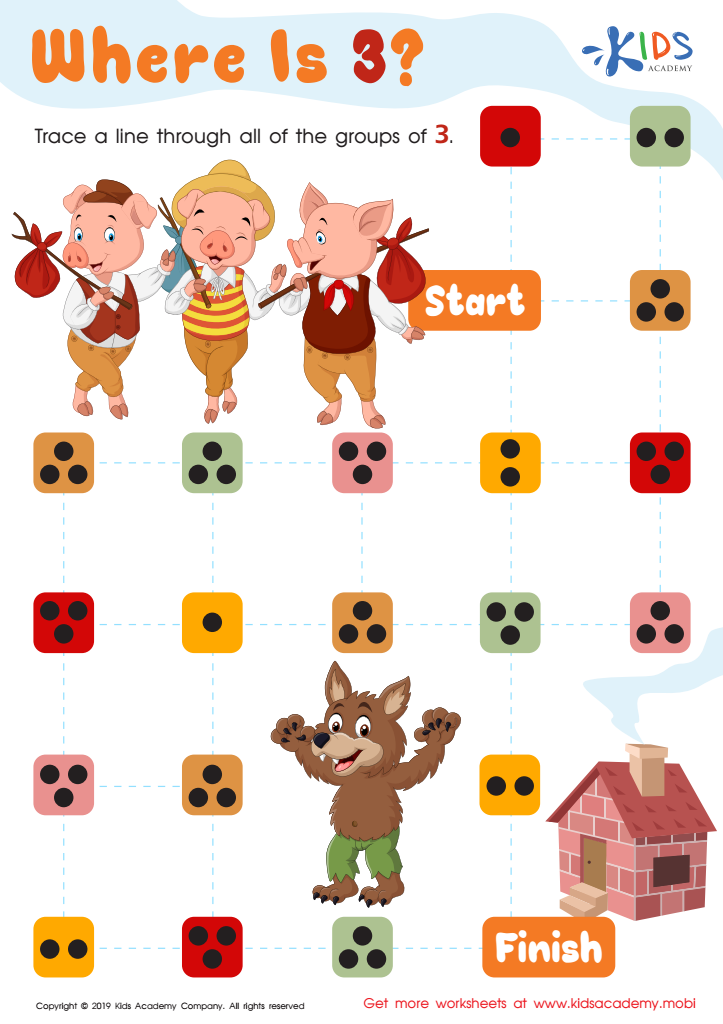

Where Is 3? Worksheet
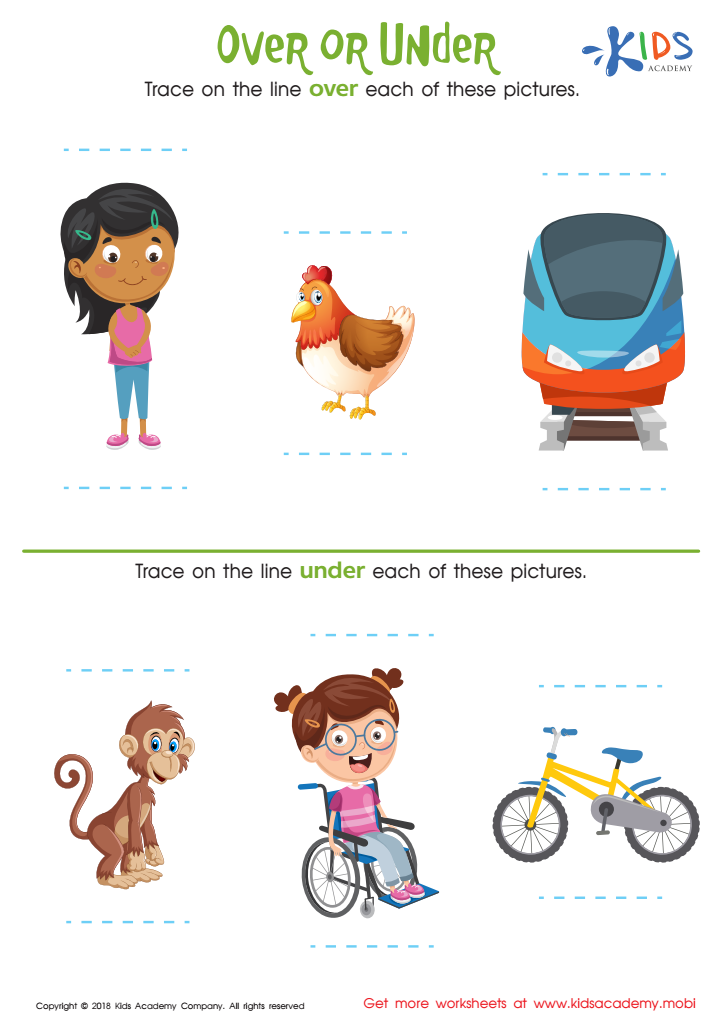

Over or Under Worksheet


In Front or Behind Worksheet
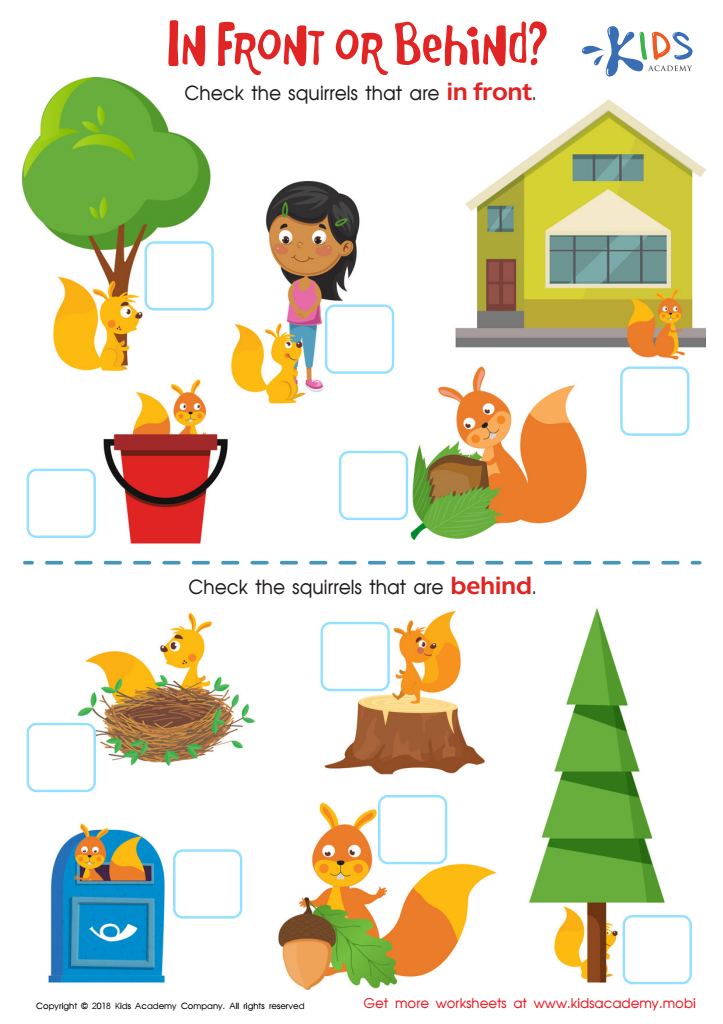

In Front or Behind: Part 2 Worksheet
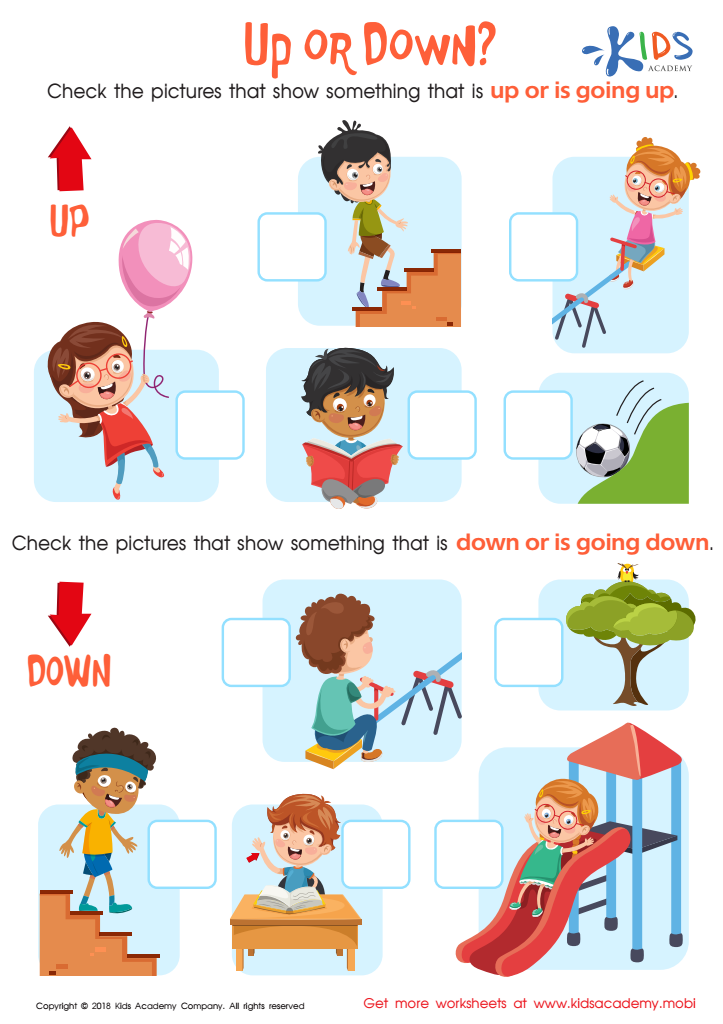

Up or Down Worksheet
Spatial awareness is a crucial component of early childhood development, particularly for children aged 4 to 5. Parents and teachers should care about this skill as it lays the foundation for future learning, especially in subjects like math, science, and geometry. At this age, children begin to develop an understanding of the relationships between objects in space, which is fundamental for skills such as measurement, problem-solving, and critical thinking.
Enhancing spatial awareness through normal math activities helps children understand concepts like shapes, sizes, and positions, making abstract mathematical ideas more concrete. Engaging in related activities, like building blocks or puzzles, fosters not only spatial reasoning but also fine motor skills. Moreover, a strong sense of spatial awareness contributes to confidence in math and can positively influence performance.
By nurturing spatial awareness, parents and teachers empower children to explore their environments intentionally, leading to enhanced creativity and innovation. Furthermore, this foundational skill aids in developing good visuo-spatial memory, which is essential for grasping more complex mathematical concepts later on. Overall, investing time and resources to support spatial awareness at this early stage fosters lifelong learning and academic success.
 Assign to My Students
Assign to My Students





